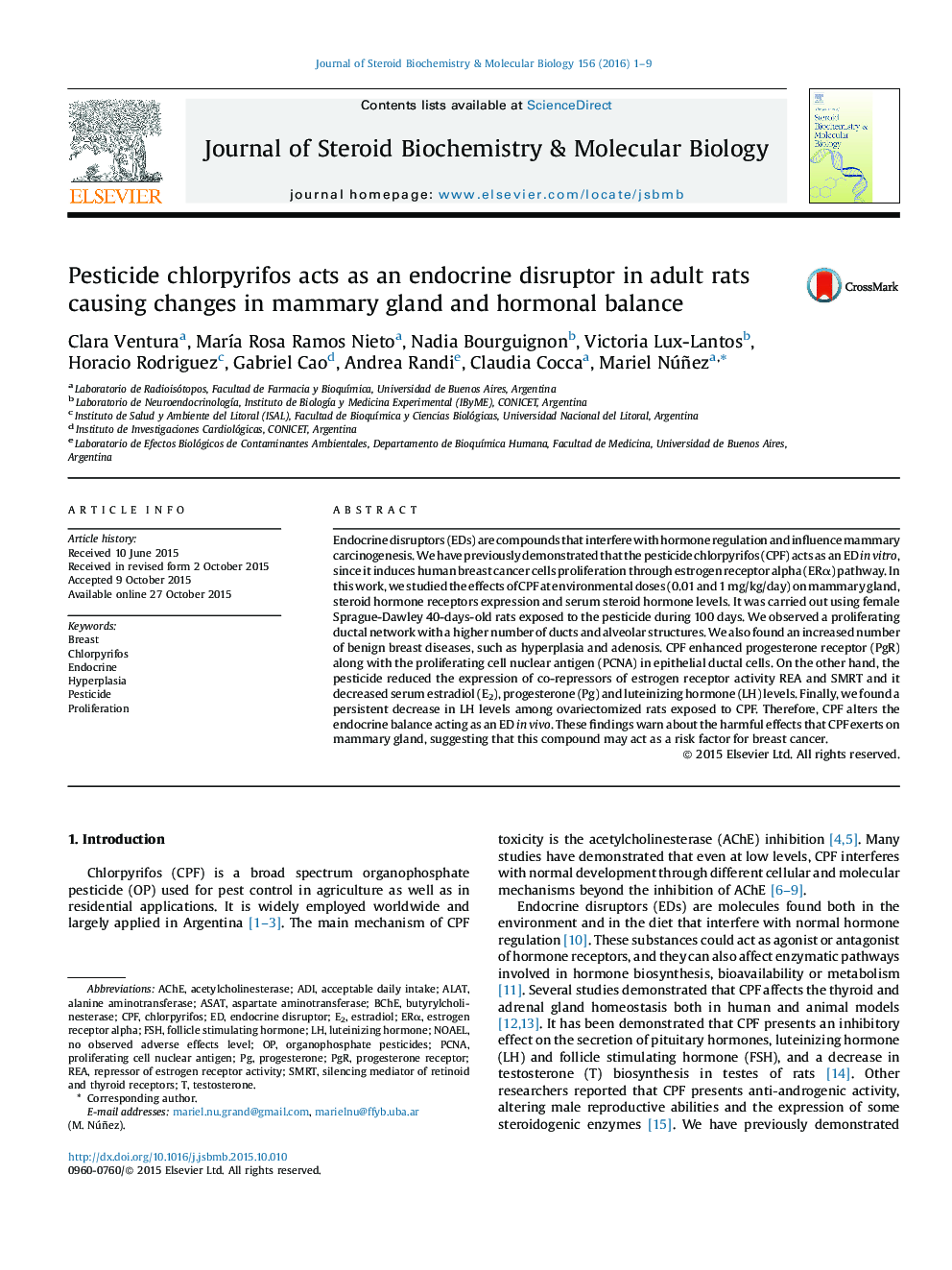| Article ID | Journal | Published Year | Pages | File Type |
|---|---|---|---|---|
| 1991271 | The Journal of Steroid Biochemistry and Molecular Biology | 2016 | 9 Pages |
Abstract
Endocrine disruptors (EDs) are compounds that interfere with hormone regulation and influence mammary carcinogenesis. We have previously demonstrated that the pesticide chlorpyrifos (CPF) acts as an ED in vitro, since it induces human breast cancer cells proliferation through estrogen receptor alpha (ERα) pathway. In this work, we studied the effects of CPF at environmental doses (0.01 and 1 mg/kg/day) on mammary gland, steroid hormone receptors expression and serum steroid hormone levels. It was carried out using female Sprague-Dawley 40-days-old rats exposed to the pesticide during 100 days. We observed a proliferating ductal network with a higher number of ducts and alveolar structures. We also found an increased number of benign breast diseases, such as hyperplasia and adenosis. CPF enhanced progesterone receptor (PgR) along with the proliferating cell nuclear antigen (PCNA) in epithelial ductal cells. On the other hand, the pesticide reduced the expression of co-repressors of estrogen receptor activity REA and SMRT and it decreased serum estradiol (E2), progesterone (Pg) and luteinizing hormone (LH) levels. Finally, we found a persistent decrease in LH levels among ovariectomized rats exposed to CPF. Therefore, CPF alters the endocrine balance acting as an ED in vivo. These findings warn about the harmful effects that CPF exerts on mammary gland, suggesting that this compound may act as a risk factor for breast cancer.
Keywords
butyrylcholinesterasePCNASMRTBChENOAELERαCPFPGRADIrEAALATAspartate aminotransferasePesticideOrganophosphate pesticidesAlanine aminotransferaseProliferating Cell Nuclear AntigenAChEAsatEstradiolAcetylcholinesteraseProliferationtestosteroneAcceptable daily intakeEndocrineendocrine disruptorfollicle stimulating hormoneluteinizing hormoneFSHhyperplasiaProgesteronebreastChlorpyrifosEstrogen receptor alphaProgesterone receptor
Related Topics
Life Sciences
Biochemistry, Genetics and Molecular Biology
Biochemistry
Authors
Clara Ventura, MarÃa Rosa Ramos Nieto, Nadia Bourguignon, Victoria Lux-Lantos, Horacio Rodriguez, Gabriel Cao, Andrea Randi, Claudia Cocca, Mariel Núñez,
